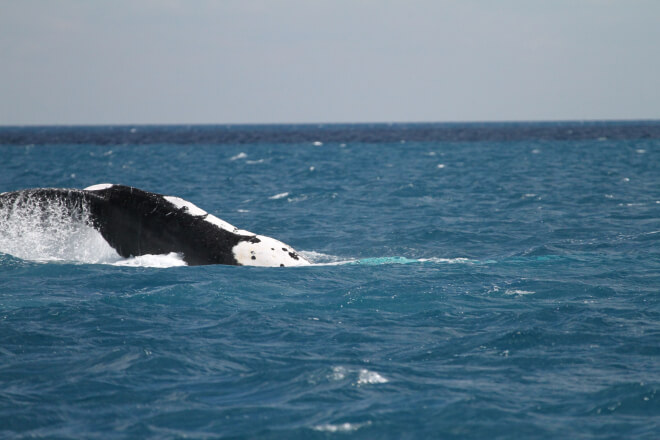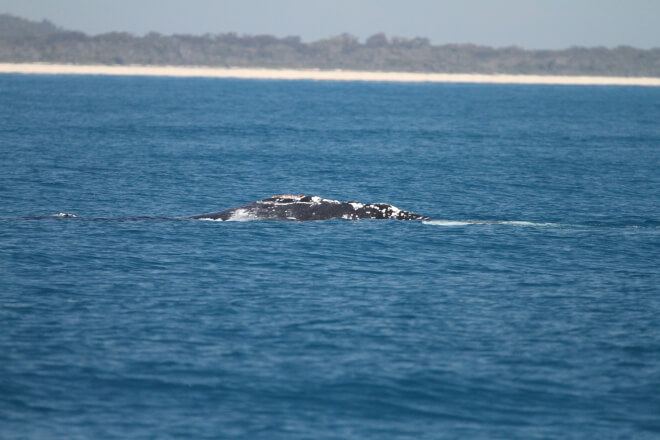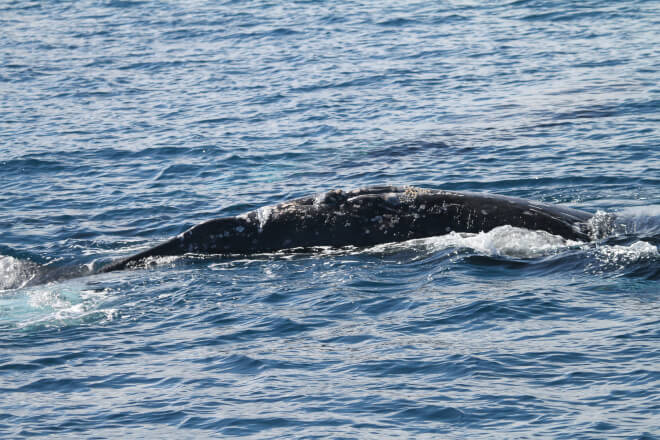In many animals, different sexes have different appearances, with males often being larger, showier, or both: think of brightly colored male songbirds or male lions with their luscious manes. For humpback whales, however, this is not the case. Apart from females being slightly larger than males on average, humpback whale males and females look very similar to each other, making it very difficult to visually determine sex. Adding to this, all reproductive organs in both females and males are neatly tucked away behind a genital slit to help them be more hydrodynamic and sleek in the water.
Luckily for us researchers, though, we have a few tricks up our sleeves to tell the difference between the sexes, allowing us to collect additional data for our photo-identification catalog.
The easiest way to determine a female humpback whale is a close association with a calf. Mothers and calves maintain a strong bond throughout the first year of the calf’s life, so when we see an adult whale closely accompanied by a calf, we can safely assume that she is the mother of that calf.
In the absence of a calf, though, things become trickier. If the whales roll over onto their backs, often we can see the genital slit on their abdomen. The relative location of the genital slit offers some clues: For males, the genital slit is located closer to the whale’s belly, while the females’ genital slit is closer to their tail flukes. Immediately towards the tail from the genital slit, females have a grapefruit-sized lump known as a hemispherical lobe. No one knows what exactly this structure does, but we do know that it is only present on females. Females also have two mammary slits, one on either side of the genital slit, which they will use when nursing their calves.
Click through the photos in this gallery and our researchers will explain how we were able to identify the sex of these humpback whales
-

The genital slit of a male humpback whale is located farther from the tail flukes and does not feature a hemispherical lobe. -

Males are generally more difficult to sex than females, but sometimes they roll over in just the right way to get a good photo of the genital slit. This animal’s head is pointed toward the left, and the tail flukes are visible as white patches just under the surface on the right. -

Tail slapping -

This female’s hemispherical lobe is clearly visible just to the left of her genital slit in this photo. The animal’s head is pointing toward the right.
When we are able to determine the sex of a whale, this information is included along with the animal’s fluke photo when it is added to the catalog. Knowing the sex of different individuals enables us to more accurately determine calving rate and sex ratios of different habitat areas.

